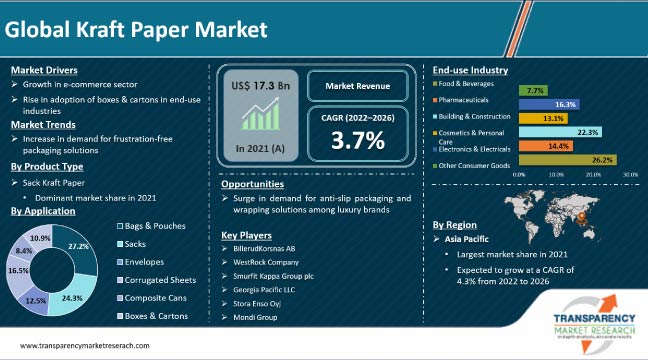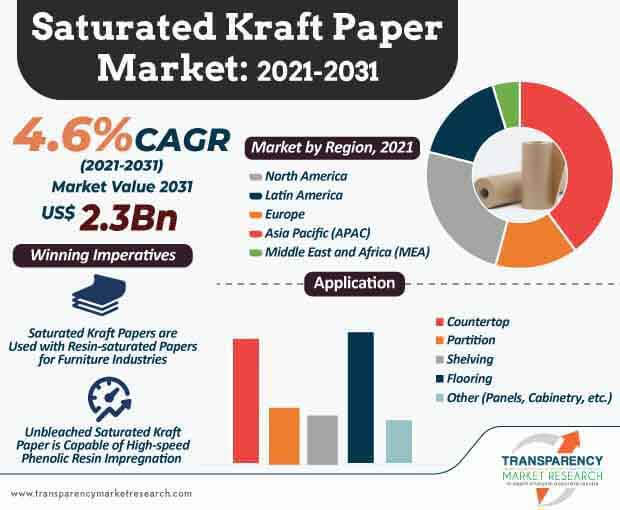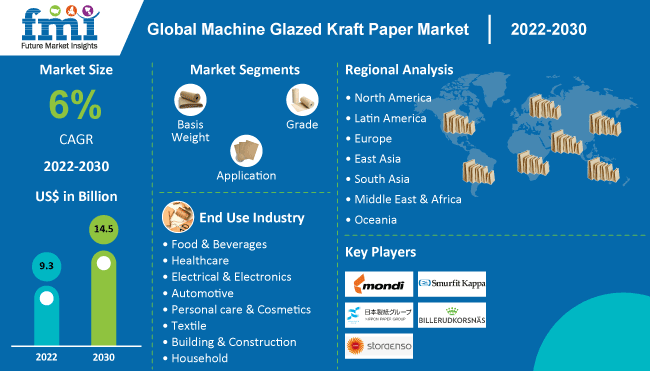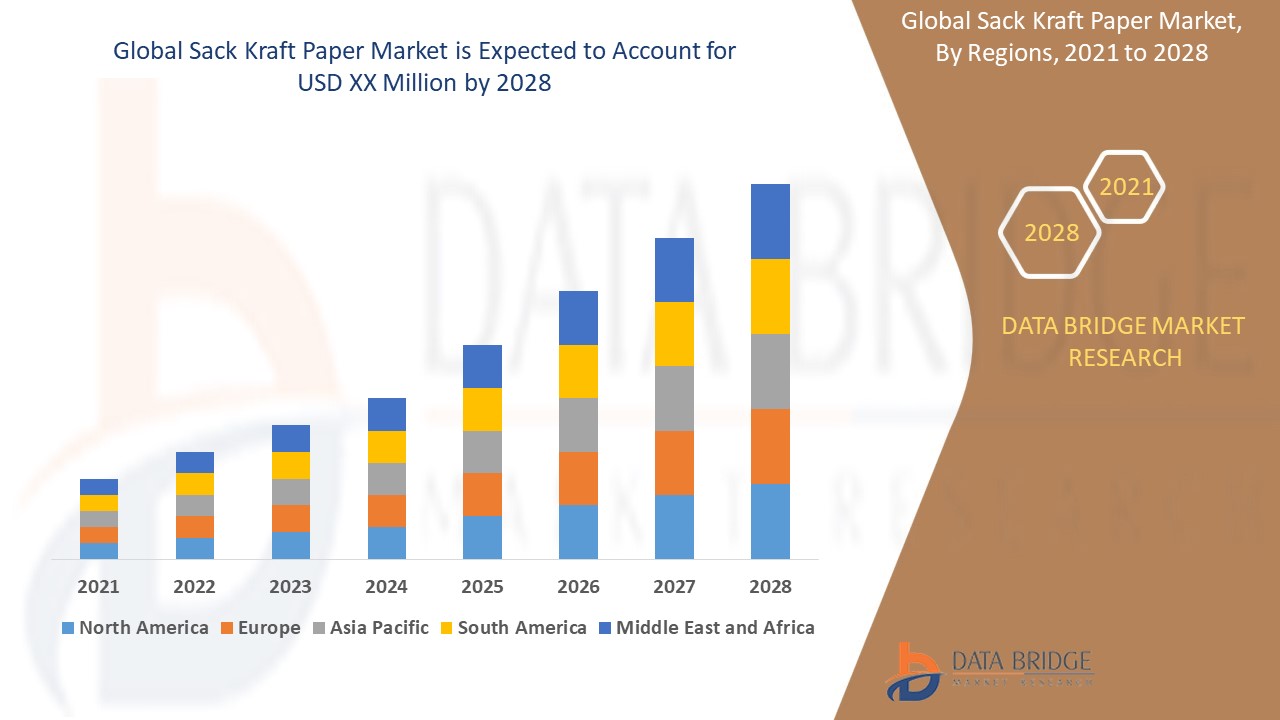Why Choose Kraft Paper Market for Sustainable Packaging?
Here's your updated blog post with the images inserted and tables added:
Section 1: The Basics of Kraft Paper Market
Kraft paper, also known as brown paper, is a type of paper made from wood pulp. It is named after the German word "Kraft," which means strength. Kraft paper is widely used in the packaging industry due to its exceptional strength and durability. In this section, we will explore the significance of Kraft paper in the packaging industry, its key characteristics that differentiate it from other types of paper, and provide a historical overview of the Kraft paper market.
What is Kraft Paper and its Significance in the Packaging Industry?
Kraft paper is a coarse, brown-colored paper with high tensile strength. It is commonly used for packaging goods such as groceries, pharmaceuticals, and industrial products. The significance of Kraft paper in the packaging industry lies in its ability to provide excellent protection and support to the packaged products.
One of the primary reasons for the popularity of Kraft paper is its eco-friendliness. Unlike plastic packaging materials, Kraft paper is biodegradable and recyclable, making it a sustainable choice for environmentally conscious consumers and businesses.
Furthermore, Kraft paper offers excellent tear resistance, puncture resistance, and durability, making it suitable for heavy-duty packaging requirements. Its resistance to moisture also makes it an ideal choice for packaging products that need protection from humidity and moisture.
Key Characteristics that Differentiate Kraft Paper from Other Types of Paper
Kraft paper possesses several characteristics that distinguish it from other types of paper. Some key features of Kraft paper include:
- Strength: Kraft paper is known for its high strength and durability. The long fibers in the paper make it resistant to tearing and provide enhanced tensile strength.
- Coarse Texture: Kraft paper has a rough, coarse texture that adds to its strength. The coarse texture also enhances the grip on packaged products, making it suitable for various packaging applications.
- Brown Color: Kraft paper is typically brown in color due to the presence of lignin, a natural compound found in wood fibers. The brown color gives Kraft paper a natural and organic appearance.
- Versatility: Kraft paper is available in varying thicknesses and strengths, making it versatile for different packaging needs. It can be used for anything from lightweight packaging to heavy-duty industrial packaging.
- Recyclability: Kraft paper is highly recyclable and biodegradable, contributing to reduced environmental impact. It can be reused or recycled into new paper products.
Historical Overview of the Kraft Paper Market
The history of Kraft paper dates back to the 19th century when it was first developed by Carl F. Dahl, a Swedish chemist. The invention of the Kraft pulping process revolutionized the paper industry, as it allowed for the production of stronger and more durable paper. The commercial production of Kraft paper began in the early 20th century, and its usage quickly spread across various industries.
Over the years, the demand for Kraft paper has continued to grow, driven by factors such as increasing emphasis on sustainable packaging solutions and the rise of e-commerce. Today, the global Kraft paper market is experiencing significant growth, with a projected market value of USD 21.2 billion by 2034.
In summary, Kraft paper is a versatile and eco-friendly packaging material that offers exceptional strength and durability. Its significance in the packaging industry lies in its ability to provide superior protection to packaged products. With its unique characteristics and rich historical background, Kraft paper continues to be a popular choice for various packaging applications.
Section 2: Current Trends and Market Insights
The Kraft paper industry is experiencing significant growth and evolving trends. In this section, we will analyze the current market trends in the Kraft paper industry, explore the factors influencing price trends, and provide insights into the global market forecast for Kraft paper.
Analysis of current market trends in the Kraft paper industry
The Kraft paper industry is witnessing several trends that are shaping the market. One of the key trends is the increased demand for eco-friendly packaging solutions, especially in the eCommerce sector. As consumers become more conscious of the environmental impact of their choices, businesses are shifting towards sustainable packaging alternatives. Kraft paper, with its recyclable and biodegradable properties, is gaining popularity as an eco-friendly packaging material.
Another trend in the Kraft paper market is the growing consumption of specialty Kraft paper. Specialty Kraft paper, which includes products like sack Kraft paper, holds a significant market share of 82.5% in 2024. This is primarily driven by the demand for luxury packaging in various industries, including cosmetics, food, and consumer goods.
Furthermore, specific regional markets are experiencing substantial growth in the Kraft paper industry. China, for example, is projected to have a Compound Annual Growth Rate (CAGR) of 5.4% due to the booming eCommerce sector. The high demand for Kraft paper packaging to meet online shopping needs is driving the market growth in China. India and Thailand are also expected to witness considerable growth with CAGRs of 5.9% and 4.8% respectively.
Factors influencing the price trends in the Kraft paper market
Several factors influence the price trends in the Kraft paper market. One of the primary factors is the availability and cost of raw materials. Kraft paper is predominantly made from wood pulp, and any fluctuations in the price or availability of wood pulp can impact the overall cost of Kraft paper production.
Additionally, environmental concerns and the impact of deforestation on the paper industry can affect the supply chain of raw materials. Deforestation issues can lead to stricter regulations on sourcing sustainable wood pulp, which may further impact the pricing of Kraft paper.
Another factor influencing price trends is the overall demand and consumption of Kraft paper. Factors such as the growth of eCommerce, urbanization, and the focus on sustainable packaging play a crucial role in shaping demand for Kraft paper. Increased demand can lead to higher prices if the supply struggles to keep pace.
Moreover, rising paper prices in general can also affect the Kraft paper market. Any fluctuations in the global paper market, such as changes in production or transportation costs, can impact the pricing of Kraft paper.
Global market forecast for Kraft paper and expected growth rates
The global Kraft paper market is expected to witness significant growth in the coming years. According to market reports, the market is projected to reach US$ 21.2 billion by 2034 with a Compound Annual Growth Rate (CAGR) of 2.4%.
North America is expected to lead the global Kraft paper market, followed by Europe and the Asia Pacific region. The stringent environmental regulations in North America and the growing preference for sustainable packaging are driving the demand for Kraft paper in the region.
The Asia Pacific region, particularly countries like India and China, is projected to experience the highest growth rate in the Kraft paper market. The increased demand for Kraft paper, driven by the growth of eCommerce and the focus on sustainable packaging, is boosting the market in this region.
In conclusion, the Kraft paper market is witnessing significant growth and evolving trends. The demand for eco-friendly packaging solutions, the consumption of specialty Kraft paper, and the growth of regional markets are all contributing to the market's expansion. Factors such as raw material availability, environmental concerns, overall demand, and paper prices influence the price trends in the market. The global market forecast for Kraft paper indicates substantial growth, with North America and the Asia Pacific region leading the market.
Section 3: Sustainability and Innovations in Kraft Paper
The increasing focus on sustainability and eco-friendly packaging solutions has been a major driver for the growth of the Kraft paper market. As consumers become more aware of the environmental impact of packaging materials, there is a growing demand for sustainable alternatives. Kraft paper, with its natural brown color and biodegradable properties, has emerged as a popular choice in the packaging industry.
Sustainability initiatives driving the demand for Kraft paper
Numerous sustainability initiatives and regulations have been implemented globally to minimize the use of non-recyclable and harmful packaging materials. Kraft paper, being a renewable and recyclable material, aligns well with these initiatives. Many companies and industries are adopting kraft paper as part of their sustainable packaging practices. The growth of e-commerce has also contributed to the demand for kraft paper, as consumers prefer packaging materials that are environmentally friendly.
Innovative solutions and technologies in Kraft paper production
To meet the growing demand for sustainable packaging, there have been several innovations in kraft paper production. One notable innovation is the development of machine-glazed kraft papers, which are gaining popularity in the food industry for food packaging. These papers are designed to have a smooth and glossy surface, ensuring high performance in terms of strength, tear resistance, and moisture resistance.
Furthermore, advancements in production technologies have made it possible to produce kraft paper with different properties to cater to various packaging needs. For instance, specialty kraft paper is heavily consumed by end users for luxury items packaging, as it offers enhanced strength and tear resistance.
Impact of eco-friendly packaging on the Kraft paper market
The shift towards eco-friendly packaging has had a significant impact on the Kraft paper market. With the increasing emphasis on sustainable packaging, kraft paper has become a preferred choice for various industries such as food and beverage, retail, logistics, and construction. E-commerce growth has also played a crucial role in boosting the sales of paper packaging products like bags, boxes, and cartons.
However, there are challenges that the Kraft paper market faces. Limited availability of raw materials and high production costs constrain the market's growth. Additionally, rising paper prices and competition from plastic composites present hurdles for the industry. Despite these challenges, there are opportunities for kraft paper manufacturers, driven by the increasing demand for sustainable packaging and e-commerce packaging solutions.
In conclusion, the sustainability initiatives and innovations in kraft paper production have contributed to the growth of the Kraft paper market. The demand for eco-friendly packaging solutions, especially in the e-commerce sector, has driven the adoption of kraft paper. With the development of machine-glazed kraft papers and specialty kraft paper, the industry has been able to cater to different packaging needs. The impact of eco-friendly packaging on the Kraft paper market is evident in its growing popularity across various industries. Despite challenges, kraft paper manufacturers have opportunities for growth, particularly in emerging markets with stricter environmental regulations.
Stay tuned for the next section where we will delve into the packaging applications of kraft paper and its versatility in different industries.
Sources:
- Global Kraft Paper Market Size, Share & Trends Analysis Report
- Kraft Paper Market to Register a CAGR of 2.4% by 2033
- Sustainable Packaging Market Size, Share & Trends Analysis Report
- Global Kraft Paper Market Report
FAQs about Kraft Paper Market:
What is Kraft Paper and its significance in the packaging industry?
To understand Kraft paper and its significance in the packaging industry, it's essential to know that Kraft paper is a brown-colored paper made from wood pulp, valued for its high strength and durability in protecting packaged goods.
What are the key characteristics that differentiate Kraft Paper from other types of paper?
To differentiate Kraft paper from other types of paper, consider its high strength, coarse texture, natural brown color, versatility in thickness and strength, and recyclability.
What is the historical overview of the Kraft Paper market?
Exploring the historical overview of the Kraft Paper market reveals its 19th-century origin, marked by the Kraft pulping process development and its subsequent commercial production in the early 20th century.
How do current market trends in the Kraft Paper industry impact its growth?
Analysing the current market trends in the Kraft Paper industry highlights the increased demand for eco-friendly packaging, the rising consumption of specialty Kraft paper, and growth in regional markets like China, India, and Thailand.
What sustainability initiatives are driving the demand for Kraft Paper?
Understanding the demand for Kraft paper involves recognizing sustainability initiatives and regulations promoting recyclable and eco-friendly materials, aligning Kraft paper with such practices and the growth of e-commerce as a contributing factor.
In conclusion, Kraft paper is crucial in packaging. Differentiators and global expansion are key. Sustainability drives demand, boosting innovations. Eco-friendly solutions are reshaping markets.





